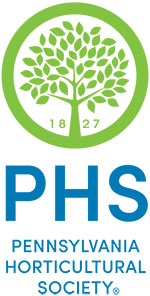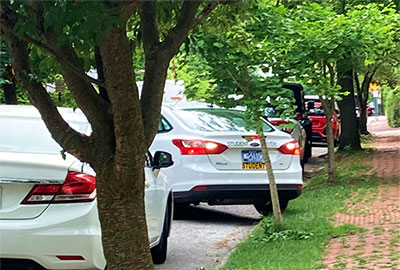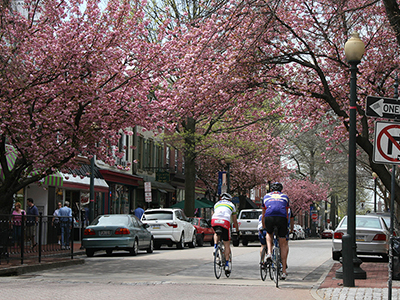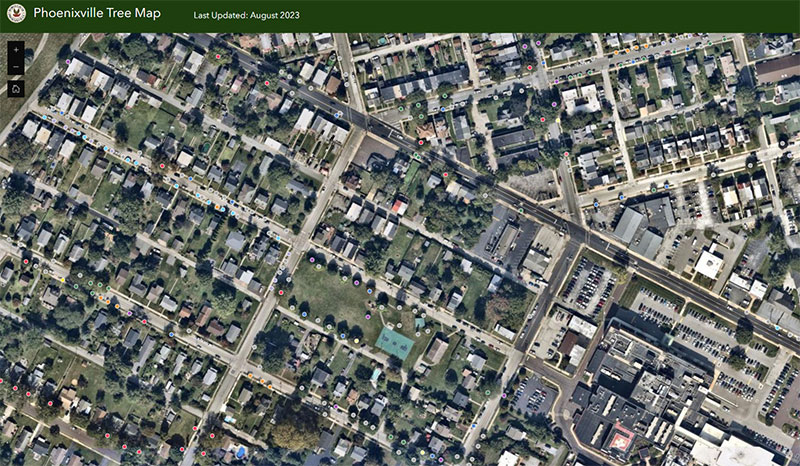Planting and Maintaining New Trees
While planting new trees is important, selecting the right native trees and maintaining them afterwards are essential to ensure their long term survival. Native plants are preferred because they are well adapted to soils and climate, are largely insect and disease resistant, require less watering and fertilizing than non-native plants, and provide superior habitat, cover, and food sources for local wildlife and pollinators because they have evolved together. In addition, some non-native plants have invasive growth patterns and the ability to reproduce rapidly and prolifically, which can result in harm to the environment, economy, and sometimes human health. The high population of the white-tailed deer in this region is another challenge to maintaining newly planted trees. (See Additional Resources for more information on native plants, invasive species, and addressing deer browse.)

The following programs and resources can help keep trees healthy from planting through maturity.
PHS Tree Tenders
The PHS Tree Tenders Program offered through the Pennsylvania Horticultural Society (PHS) trains community members how to select, plant, and maintain street trees and yard trees.
TreeVitalize
 TreeVitalize, in a public-private partnership with DCNR, developed this Guide to Tree Selection, Planting and Care. The guide includes valuable information on tree and site selection, preparing the planting site, best planting practices, caring for trees, and diagnosing tree problems. The guide also discusses tree commissions, street tree ordinances, and includes tree lists noting size and characteristics.
TreeVitalize, in a public-private partnership with DCNR, developed this Guide to Tree Selection, Planting and Care. The guide includes valuable information on tree and site selection, preparing the planting site, best planting practices, caring for trees, and diagnosing tree problems. The guide also discusses tree commissions, street tree ordinances, and includes tree lists noting size and characteristics.
Urban Trees

Photo credit: Will Williams
Trees in urban areas are especially valuable because they provide shade and cooling in hot summer months, enhance public health, and create attractive streetscapes for residents, businesses, and visitors. However, trees in these highly populated areas also face a myriad of challenges to survive including competition for space, proper light and nutrition, damage from cars and snowplows, vandalism, heavy pruning, and residents who may not appreciate or understand their value. The slide presentation by the West Chester Sustainability Director, entitled Protecting and Growing West Chester's Urban Forest, provides an excellent summary and visual record of the challenges faced by the urban forest and ways to enhance their chances of surviving.
The following tree ordinances work well in urban areas. These ordinances include protections for both public trees and larger trees on private property:
- The West Chester Borough Tree Ordinance creates regulations to preserve, protect, and restore the health of existing trees within the Borough and to promote the planting of new trees. To encourage the protection of Heritage Trees on private property, the borough offers credits towards their stream protection fee.
- The Lancaster City Tree Ordinance is another example of an urban focused tree protection ordinance. The City views the urban forest as a necessary part of its infrastructure and includes protections for street trees, trees in parks and public open space, and larger trees on private property.
- The College Township Tree Ordinance (Centre County) addresses the protection of public and private trees and includes a heritage tree protection program.
- Although not a borough or city, Schuylkill Township's "Conservation of woodlands and other vegetation" zoning regulations provide an example of a non-urban municipality that protects both woodlands and individual specimen trees (trees above a defined size) on private property. The tree removal permit section of the ordinance includes several exemptions and allowances for property owners to remove trees if specific criteria are met. Protection of woodlands and tree replacement are also addressed.
See the Tree Protection and Replacement Ordinance Standards page for more tree protection examples.
For more information about Urban Heat Islands and the benefits of trees in addressing their effects, see EPA's Heat Island Effect webpage and click on the "Trees and Vegetation" link. The Planning Commission's eTools on Urban Heat Island Mitigation, Street Trees, and Urban Green Spaces also provide helpful guidance and resources for trees and landscaping in urban areas. Finally, DVRPC has a webpage focused on the Municipal Management of Extreme Heat that urban areas may find helpful.
Tree Canopy Goals
While a specific tree canopy goal depends on the characteristics of each community, a goal of 40% is a good starting place for many urban areas in our region. The placement of the trees is equally important with priority areas along streets where they provide essential neighborhood shade and in highly paved areas where they can reduce the urban heat island effect.
Tree Equity Score — Tree Equity Score is a nationwide website that highlights inequitable access to trees. The score is calculated for urban areas at the neighborhood (Census block group) level. Scores range from 0-100 with a lower score indicating a greater priority for tree planting. The site recommends a "tree canopy goal" for each block group analyzed based on several factors. In Chester County urban block groups, the goals generally range from 40% to 50%. View the Tree Equity Score map.
Urban Tree Inventories and Management Plans
A professional tree inventory allows for enhanced management and maintenance of a community's trees. Inventorying and assessing existing trees can help avoid expensive emergency tree services, reduce risk to people and property, and provide the basis for a tree management plan tailored to each community.
The Phoenixville Borough Urban Forest Hub site provides information and resources to support the stewardship of the borough's trees. The site includes an interactive tree inventory showing the tree species, condition, size and other information. The hub also includes borough tree data (e.g., percent of trees by species, condition, size, and location), a tree equity score map, the financial benefits of trees, and a wide range of educational resources for proper tree planting and management.
The West Chester Borough Urban Forest Hub site provides a wealth of valuable information about the borough's urban canopy, its benefits, tree maintenance and care, and information on the goals for the future of West Chester's urban forest. The site includes an interactive map of borough street trees with information on the tree species, size, and condition of each mapped tree.
The Wisconsin Department of Natural Resources maintains an Urban Forest website that includes a useful section on Tree Inventory resources and their benefits.
For additional urban tree resources, including financial and technical assistance, visit the PA DCNR Urban and Community Forestry website.
Shade Tree Commissions
 Shade tree commissions can play an important role in protecting and growing trees in a variety of municipal settings. Their assistance can be particularly valuable in urban areas where people and trees live in close proximity and, as noted under Urban Trees, conflicts are more likely to occur. Shade Tree Commissions can provide advice to the governing body on municipal tree policies, provide information to the public on recommended trees based on their setting, monitor the health of trees, review proposed developments, and provide input on compliance with ordinances and landscaping considerations. Depending on the controls in place in a community, they may also review proposed tree planting, trimming, and removal requests.
Shade tree commissions can play an important role in protecting and growing trees in a variety of municipal settings. Their assistance can be particularly valuable in urban areas where people and trees live in close proximity and, as noted under Urban Trees, conflicts are more likely to occur. Shade Tree Commissions can provide advice to the governing body on municipal tree policies, provide information to the public on recommended trees based on their setting, monitor the health of trees, review proposed developments, and provide input on compliance with ordinances and landscaping considerations. Depending on the controls in place in a community, they may also review proposed tree planting, trimming, and removal requests.
Shade tree commissions have a long established history in Pennsylvania having been authorized for first class townships, boroughs, and cities under Pennsylvania Shade Tree Commission Act of 1907. Approximately 25 years later, Article XXIX of PA Act 49 of 1933 allowed townships of the second class to also establish shade tree commissions.
Several Chester County municipalities have volunteer shade tree commissions or similar groups to oversee the shade trees primarily within the public realm. For example, the Malvern Shade Tree Commission oversees selection, planting, maintenance, and removal/replacement of all street trees. The creation and duties of the commission are established under their Shade Tree Commission Ordinance.
The Phoenixville Tree Advisory Commission promotes public support and interest in street tree and public tree programs in the borough. The Advisory Commission's website includes a regulated tree application, tree manual, and list of approved street trees and a link to their Urban Forest hub site.
The West Chester Tree Commission has a website with information for contractors, common tree care issues, an approved tree list for streets and parks, and a planting/pruning and removal application. A link is also provided to their highly informative Tree Hub Site.
Radnor Township in Delaware County also has an active Shade Tree Commission. The Radnor Township Tree Commission webpage provides an overview of their responsibilities along with a wide range of useful community tree information. Their Shade Tree Ordinance establishes the shade tree commission and includes provisions for the protection and maintenance of trees in the township. The ordinance allows for a fee-in-lieu to be made to the Shade Tree Fund if full replacement requirements are not practical. Permits and forms used by the Commission are located at the bottom of the page.
The Planning Commission's Street Trees eTool provides advice and resources for municipalities who want to see their street trees thrive and recognizes shade tree commissions as a part of a successful street tree program.


